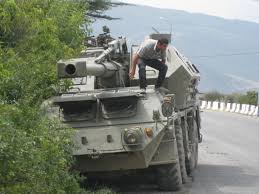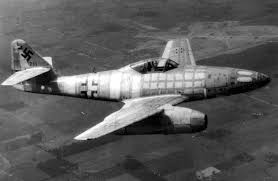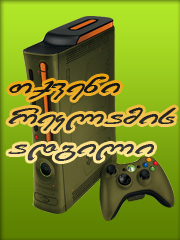 |
ტოპ მომხმარებლები |
 |
 |
| Admin Generalissimo | სიახლე: კომენტარი: პოსტი: | 1503 237 217 |
| Checked Major | სიახლე: კომენტარი: პოსტი: | 215 207 29 |
| Moder Major | სიახლე: კომენტარი: პოსტი: | 122 185 87 |
| Admin Colonel general | სიახლე: კომენტარი: პოსტი: | 51 93 11 |
| Checked Private | სიახლე: კომენტარი: პოსტი: | 27 49 5 |
|  |
 |
 |
 |
|
 |
Artillery Gun Module (AGM) |
 |
 |
 The Artillery Gun Module (AGM) 155-mm self-propelled howitzer was developed as a private venture to meet potential future requirements of the German Army. Prototype of the AGM was revealed in 2004.
The Artillery Gun Module is based on the technology of the PzH 2000 self-propelled howitzer, which is in service with German Army. It provides the same performance of the PzH 2000, but is cheaper to build has reduced crew and significantly lighter weight. The AGM is air-transportable. It was developed as a supplement to the PzH 2000 where heavier weaponry is not available, recommendable or too expensive.
The Artillery Gun Module uses the 155-mm / L52 gun. The AGM has a fully automatic loading system, which loads the projectiles and the charges. The main gun components are from the PzH 2000. It also retains features and performance parameters of the PzH 2000. The AGM has a rate of fire of 6 - 8 rounds per minute and is capable of multiple-round simultaneous-impact firing. If necessary the system can be loaded and fired manually. The AGM is compatible with all standard NATO munitions. Maximum range of fire is 30 km with standard rounds and 40 km with base bleed rounds. A total of 30 projectiles are and associated charged are carried. The AGM can also be adapted for a lighter gun, such as the 155-mm / L39 of 105-mm gun.
Artillery Gun Module is fitted with advanced fire control system. A muzzle
...
კითხვის გაგრძელება »
The Artillery Gun Module (AGM) 155-mm self-propelled howitzer was developed as a private venture to meet potential future requirements of the German Army. Prototype of the AGM was revealed in 2004.
The Artillery Gun Module is based on the technology of the PzH 2000 self-propelled howitzer, which is in service with German Army. It provides the same performance of the PzH 2000, but is cheaper to build has reduced crew and significantly lighter weight. The AGM is air-transportable. It was developed as a supplement to the PzH 2000 where heavier weaponry is not available, recommendable or too expensive.
The Artillery Gun Module uses the 155-mm / L52 gun. The AGM has a fully automatic loading system, which loads the projectiles and the charges. The main gun components are from the PzH 2000. It also retains features and performance parameters of the PzH 2000. The AGM has a rate of fire of 6 - 8 rounds per minute and is capable of multiple-round simultaneous-impact firing. If necessary the system can be loaded and fired manually. The AGM is compatible with all standard NATO munitions. Maximum range of fire is 30 km with standard rounds and 40 km with base bleed rounds. A total of 30 projectiles are and associated charged are carried. The AGM can also be adapted for a lighter gun, such as the 155-mm / L39 of 105-mm gun.
Artillery Gun Module is fitted with advanced fire control system. A muzzle
...
კითხვის გაგრძელება »
|
 |
 |
 |
 |
 |
DANA 152-mm self-propelled gun-howitzer |
 |
 |
 The DANA 152-mm self-propelled gun-howitzer was developed in former Czechoslovakia. It was designed as an alternative for the Soviet 2S3 Akatsiya. Unlike many other howitzers DANA is based on a wheeled chassis. It's production commenced in 1981 and ceased in 1994 with over 750 units built. Currently it is in service with Czech republic, Slovakia, Poland and Libya.
The DANA is armed with a turret-mounted 152-mm gun-howitzer. It fires all standard Soviet and indigenous 152-mm rounds. Czech army currently uses three main types of ammunition, high-explosive rounds with a maximum range of 18 km, improved shape high-explosive with a maximum range of 20 km, and high-explosive anti-tank rounds for direct fire at armored targets. DANA carried 60 rounds, that are fed automatically.
It is worth mentioning that the DANA's autoloader was unique for it's time. It is able to load shell and cartridge in any elevation. This feature is considered as standard nowadays and DANA was one of the first artillery systems with such loader in service. Three hydraulic stabilizers are lowered into the ground before firing. The DANA has a roof-mounted crane to assist ammunition loading.
Secondary armament consists of a roof-mounted 12.7-mm machine gun.
Chassis of the DANA SpGH has 8x8 configuration. It uses many mechanical components of the Tatra T815 Koloss
...
კითხვის გაგრძელება »
The DANA 152-mm self-propelled gun-howitzer was developed in former Czechoslovakia. It was designed as an alternative for the Soviet 2S3 Akatsiya. Unlike many other howitzers DANA is based on a wheeled chassis. It's production commenced in 1981 and ceased in 1994 with over 750 units built. Currently it is in service with Czech republic, Slovakia, Poland and Libya.
The DANA is armed with a turret-mounted 152-mm gun-howitzer. It fires all standard Soviet and indigenous 152-mm rounds. Czech army currently uses three main types of ammunition, high-explosive rounds with a maximum range of 18 km, improved shape high-explosive with a maximum range of 20 km, and high-explosive anti-tank rounds for direct fire at armored targets. DANA carried 60 rounds, that are fed automatically.
It is worth mentioning that the DANA's autoloader was unique for it's time. It is able to load shell and cartridge in any elevation. This feature is considered as standard nowadays and DANA was one of the first artillery systems with such loader in service. Three hydraulic stabilizers are lowered into the ground before firing. The DANA has a roof-mounted crane to assist ammunition loading.
Secondary armament consists of a roof-mounted 12.7-mm machine gun.
Chassis of the DANA SpGH has 8x8 configuration. It uses many mechanical components of the Tatra T815 Koloss
...
კითხვის გაგრძელება »
|
 |
 |
 |
 |
 |
me-262 |
 |
 |

es iyo sauketeso germanuli gamanadgurebeli. ai martlaz magari ra. me es mirchevnia P-51D mustangsac ki. qonda 4 cali 30mm saaviacio qvemexi. |
 |
 |
 |
 | « 1 2 ... 10 11 12 13 14 ... 32 33 » |
|
 |
მეგობრები |
 |
 |
|
 |
 |
 |
 | |



